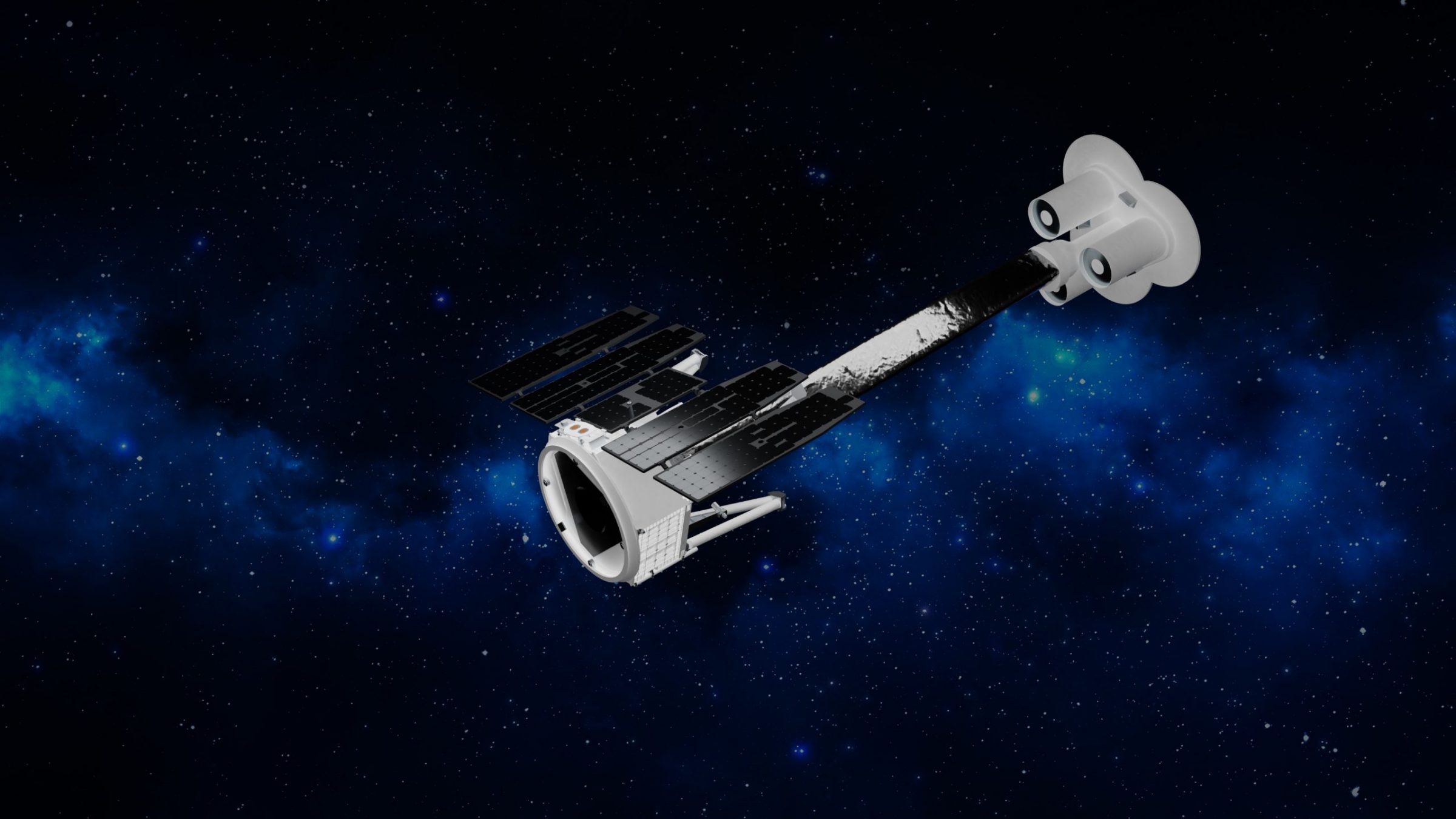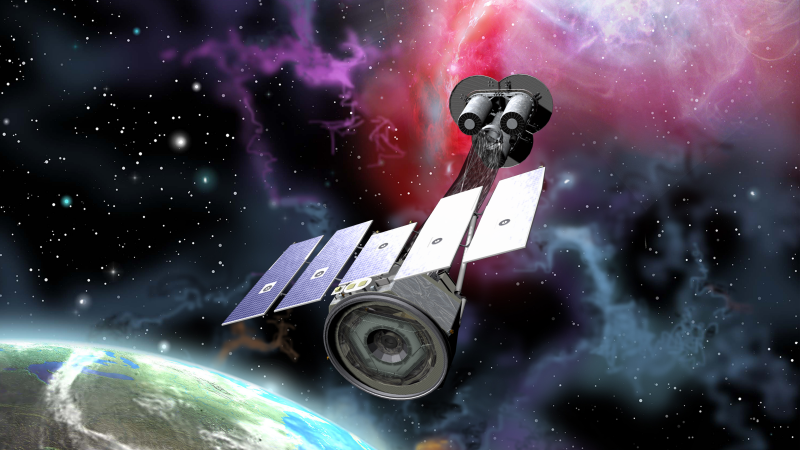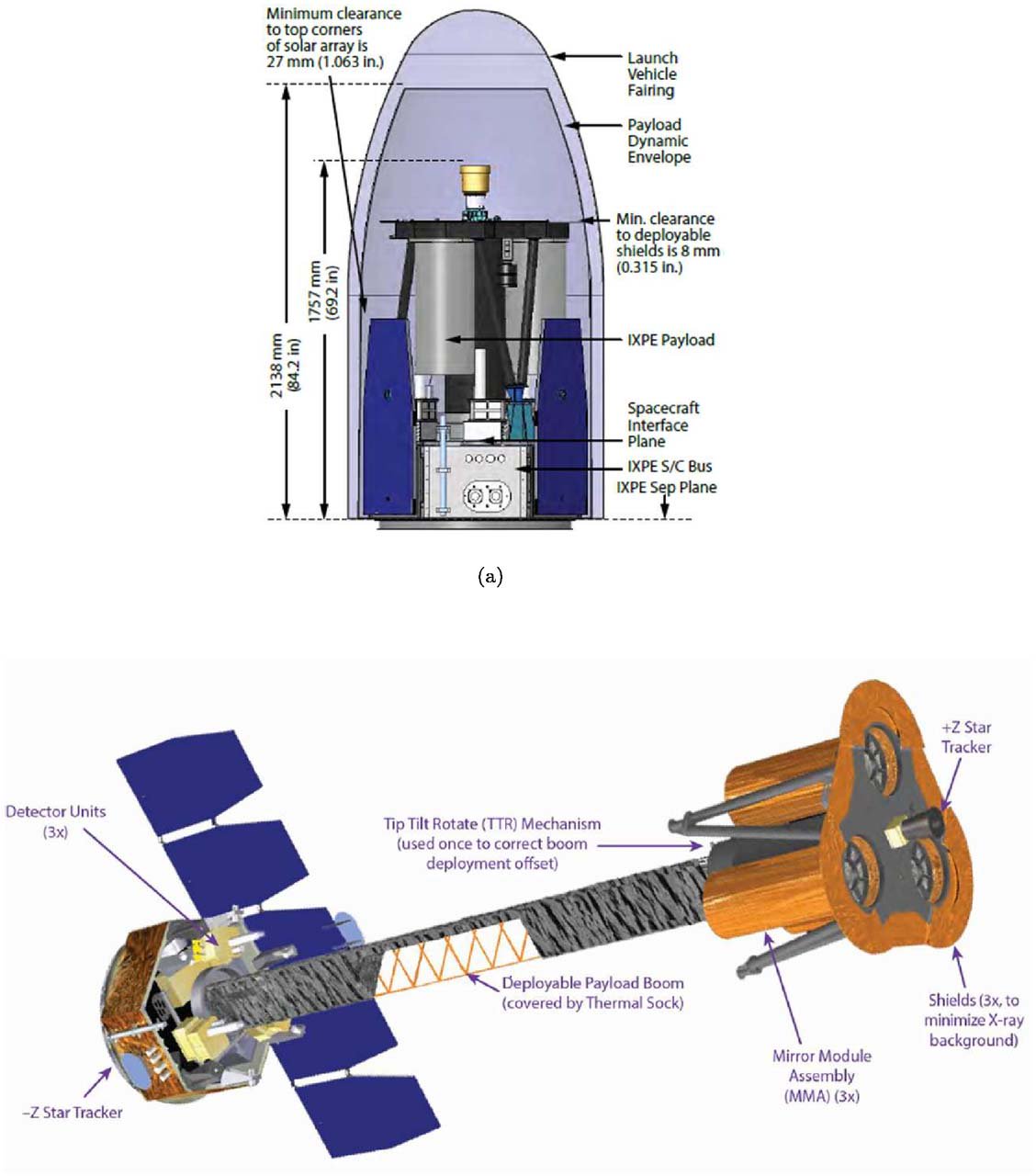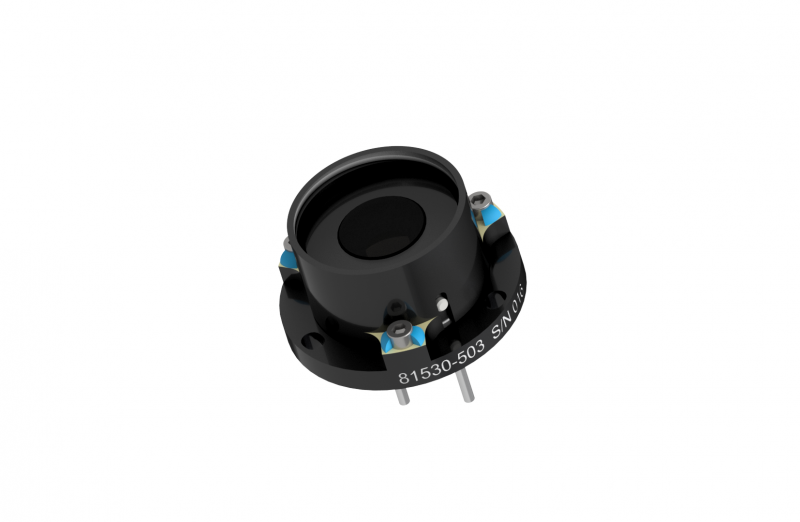
NASA’s primary science objective in astrophysics is to “discover how the universe works.” The X-Ray Polarimetry Explorer Mission (IXPE) furthers that objective as the first mission dedicated to observing polarized X-rays, revealing previously hidden details of the universe. IXPE is scheduled to launch no earlier than 1 a.m. EST Thursday, Dec. 9, on a SpaceX Falcon 9 rocket from Launch Complex 39A at NASA’s Kennedy Space Center in Florida.
IXPE is a Small Explorer mission that is part of NASA’s Astrophysics Explorer Program. The mission is a collaboration between NASA’s Marshall Space Flight Center, the Italian Space Agency and Ball Aerospace. Other partners include the University of Colorado Boulder, Stanford University, McGill University, the Massachusetts Institute of Technology and OHB Italia. IXPE will analyze changes in the polarization of X-rays from exotic sources like black holes, pulsars and neutron stars. Polarization is a property of certain electromagnetic radiations in which the direction and magnitude of the vibrating electric field are related in a specified way. Polarization of X-rays and other forms of light is related to how electromagnetic waves are oriented as they travel through space. Studying the polarization of X-rays promises to yield insights into how these objects generate X-rays and help improve our understanding of the universe.
Redwire is proud to have two critical technology solutions flying aboard the IXPE mission. Redwire Rigid Solar Panel arrays will provide power for the mission and 12 Coarse Sun Sensor (CSS) detectors will provide payload protection and navigation capabilities for the spacecraft.

Mission Objectives
The purpose of the IXPE mission is to obtain insights into the understanding of X-ray production in neutron stars, pulsar wind nebulae and stellar and supermassive black holes. The mission is also focused on providing additional technical and science objectives.

One of these goals is to improve polarization sensitivity by two orders of magnitude over the X-Ray polarimeter aboard the Orbiting Solar Observatory OSO-8.
The Orbiting Solar Observatory (OSO) program was a series of American space telescopes primarily intended to study the Sun that also included important non-solar experiments. NASA launched eight OSO space telescopes into low-Earth orbit (LEO) between 1962 and 1975, with a primary mission to observe an 11-year sunspot cycle in ultraviolet and X-ray spectra.
OSO-8 was launched on June 21, 1975, and re-entered Earth’s atmosphere on July 8, 1986. The OSO-8 spacecraft found an iron emission line in the X-ray spectrum of a galaxy cluster. Now, 25 years later, NASA is continuing with the successes of OSO-8 and expanding the scientific goals for IXPE using cutting edge polarimeter technology.

The IXPE mission has a focused list of additional technical and science goals. The mission will provide simultaneous spectral, spatial and temporal measurements and will determine the geometry and emission mechanism of active galactic nuclei and micro quasars. IXPE will also help find the magnetic field configuration in magnetars and determine the magnitude of the field; it will also find the mechanism of X-ray production in pulsars and their geometry. Lastly, IXPE will determine how particles are accelerated in pulsar wind nebulae.
The unique data collected by the IXPE mission will reveal previously hidden details about the cosmos, enabling a deeper understanding of how our universe works.
Redwire’s Mission-Critical Technology
Redwire delivered a rigid solar panel array under a 2018 contract with Ball Aerospace to design, manufacture and deliver a solar array for the IXPE mission. The solar array consists of five interconnected rigid panels that are wrapped around the IXPE spacecraft when stowed for launch and deployed once launch is complete. Each panel in the solar array consists of SolAero heritage ZTJ multi-junction photovoltaic solar cells.
Our rigid solar array aboard the #IXPE spacecraft is made of five honeycomb panels that wrap around the spacecraft until deployment in orbit.
Hear more about this innovative technology from Redwire’s Tanner Wick, manufacturing lead for the IXPE solar array: pic.twitter.com/FyC5kgRAmJ
— Redwire Space (@RedwireSpace) December 7, 2021
The sun sensors for the IXPE mission will provide payload protection from the sun. The 12 CSS detectors are placed throughout the IXPE observatory to provide a minimum of one CSS that has coverage of the sky. The CSS detectors estimate the sun vector to help the space vehicle achieve safe-mode and sun avoidance pointing requirements. The sensor layout is designed to provide sun coverage for deployment of the observatory’s solar array and boom. Each CSS has a light baffle designed to begin attenuating light coming from 56° off sensor boresight and completely attenuate light coming from 65° off sensor boresight. In addition, the sun sensors provide navigational data used for failsafe recovery of the spacecraft. The CSS detectors are mounted on the Mirror Module Support Structure deck (1X), solar array (4X), and spacecraft bus structure (7X).

IXPE Mission Benefits
The IXPE mission contributes to NASA’s goal of discovering how the universe works, and, as such, has a unique set of benefits to the world. IXPE will benefit humankind by determining radiation processes and detailed properties of cosmic X-ray sources, or categories of sources. Another benefit from IXPE will be exploring general relativistic and quantum effects in extreme environments. Lastly, studying the polarization of X-rays reveals the physics of objects like black holes and neutron stars, and can provide insights into the high-temperature environments where X-rays are created. The unique data collected by the IXPE mission will enable a deeper understanding of how our universe works, and more, as the mission unfolds.
Studying the polarization of X-rays promises to yield insights into how X-rays are generated by these exotic objects and help improve our understanding of the universe. Decades of flight heritage and continual breakthroughs in new space technology enable Redwire to deliver critical sensors and other components to government and commercial customers, improving capabilities in LEO and beyond.
For more information about Redwire’s CSS detector, click here
For more information about Redwire’s Rigid Panel Solar Array, click here




